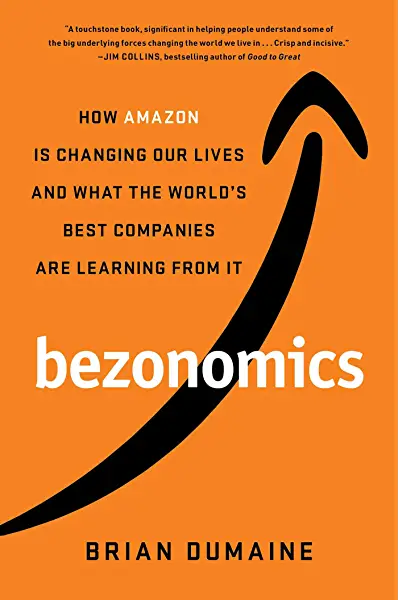

By HANS DUVEFELT, MD
Now that we are seeing patients via telemedicine or even getting reimbursed for handling their issues over the phone, our existing healthcare institutions are more and more starting to look like shopping malls.
They were once traffic magnets, so large that they created new developments far away from where people lived or worked and big and complex enough that going there became an all day affair for many people.
What this pandemic has brought us is a shift in our view of where you have to be in order to get things done. If you can earn your wage remotely and still buy things online when offices and physical stores are shut down, it seemed logical to try to offer healthcare the same way. And most of us have found that it works surprisingly well.
The analogy with Amazon runs deeper than that. Amazon isn’t just one megaprovider, but also a funnel for many small merchants who sell their products through Amazon. Consumers take advantage of the convenience of this centralized ordering or point of contact with a vast supply network of almost any product that money can buy. But they only give their credit card number to one central contact.
I don’t follow business literature enough to know if Jeff Bezos chose the name Amazon partly (yes, I know he went through the dictionary) because of a vision of many small contributories coming together into the second largest river in the world. But that is certainly a visual representation of what his business looks like. And “Amazon” ranks higher in the alphabet and sounds a lot catchier than “The Nile”.
Enter healthcare: Imagine the trusted brand names of our “industry” but without their traditional complete reliance on bricks and mortar places that patients have to visit.
Imagine telemedicine visits continuing even post-Covid , as a perfectly normal event, with a Harvard endocrinologist or geneticist through your laptop or smartphone from your kitchen table in Madawaska, Maine.
Imagine talking to your primary care provider, who may be at her clinic or in her home office on any given day of the week, maybe job sharing or office sharing with other clinicians from a physically smaller office, but linked to the primary care clinic and more closely than before to a specialty network to “curbside” electronically with (and in the spirit of Amazon, the cost for that could automatically be added to the PCPs charge for the same episode of care).
Imagine only visiting your primary care clinic when specific procedures or physical exam elements are needed for completeness of care.
Imagine doctors who aren’t getting burned out because they are now liberated from the antiquated reimbursement model of only counting foot traffic to their brick and mortar places of employment.
An ebook conveys the same information as a printed hardcover one, but at a much lower production cost. And many times a phone or video call between doctor and patient is just as effective as an old fashioned visit to the medical office.
As others have said before about telemedicine reimbursement: The genie is out of the bottle. In fact, she is magically everywhere at the same time. She’s in the cloud. And now we medical providers are, too. There should be no stuffing either one of us back inside the bottle.
A recent THCB post by Ken Terry states that lack of data can hinder telemedicine from being a good alternative to in-person visits and he also cites catching people for needed preventive care (off guard, I presume – this is one of my pet peeves, as I describe in my post “Upselling in Medicine: Would you like a Pap smear with that ankle brace, ma’am?” and in my THCB piece “The Public Health to-do list is choking doctors and jeopardizing patients lives”.
To put it plainly: Back when you only went to the doctor when you were desperately ill, they had to take the opportunity to do Public Health promotions right there and then. Now we have automated email responders, patient portals and all kinds of technology to keep track of and connect with patients between their office visits. We must move beyond the brick and mortar way of thinking about healthcare also when it comes to Public Health and preventive care, which most of the time even require a physician’s participation. Amstanding order can do if there isn’t a state law already requiring a shot, for example.
What a lot of outsiders fail to understand is that if doctors don’t have to churn patients through their clinics faster and faster to pay the ever increasing cost of doing business but could charge for the VALUE of our services, which includes the patient convenience of being able to traipse all over creation and take a day off from work for a doctor visit. Strangely, I never hear about these aspects when pundits speak of VALUE in healthcare.
We can, even without capitation, which was one of Ken Terry’s solutions, generate more revenue with less shuffling of bodies through our offices by doing more telemedicine.
And here are a couple of dirty little secrets about physical exams and data:
Many doctors document an exhaustive, normal, identical exam on every patient. The term for this is “Template Driven documentation”. We should all question the value and accuracy of this.
Many doctors today don’t have the clinical exam skills of past generations.
Even without connected instruments, a blood sugar reading is a blood sugar reading, and if patients want to cheat me with doctored up blood sugar logs, they are only cheating themselves. And I make a point of comparing my hypertensive patients inexpensive digital cuffs with our sphygmomanometers, so I generally know if I can trust their home readings.
And, for those who didn’t know, Osler, the father of modern medicine said “Listen to your patient. He is telling you the diagnosis.” More recent research tells us that this is still the case in the majority of new problem assessments.
So, for a large percentage of patients with diabetes, hypertension, high cholesterol, migraines, fibromyalgia, depression, arthritis, allergies and asthma, televisits or even telephone visits that we can charge for, just like lawyers, are a reasonable way of doing business. (Doctors, more than patients seem to forget the utility of inexpensive peak flow meters for monitoring reactive airway disease.)
I always bristle when patients say “Thanks for your time”, because sometimes a few minutes can be life saving or at least life changing, but now with all this telemedicine, it brings home the point that time spent with a patient is time spent with the patient. We may communicate with words, gestures, diagrams, pictures or all of them; we may only talk without examining them (there is required language for that), or we can do an extensive exam and just mutter and still get paid, so what’s the big deal about charging for phone calls?
Hans Duvefelt is a Swedish-born rural Family Physician in Maine.
